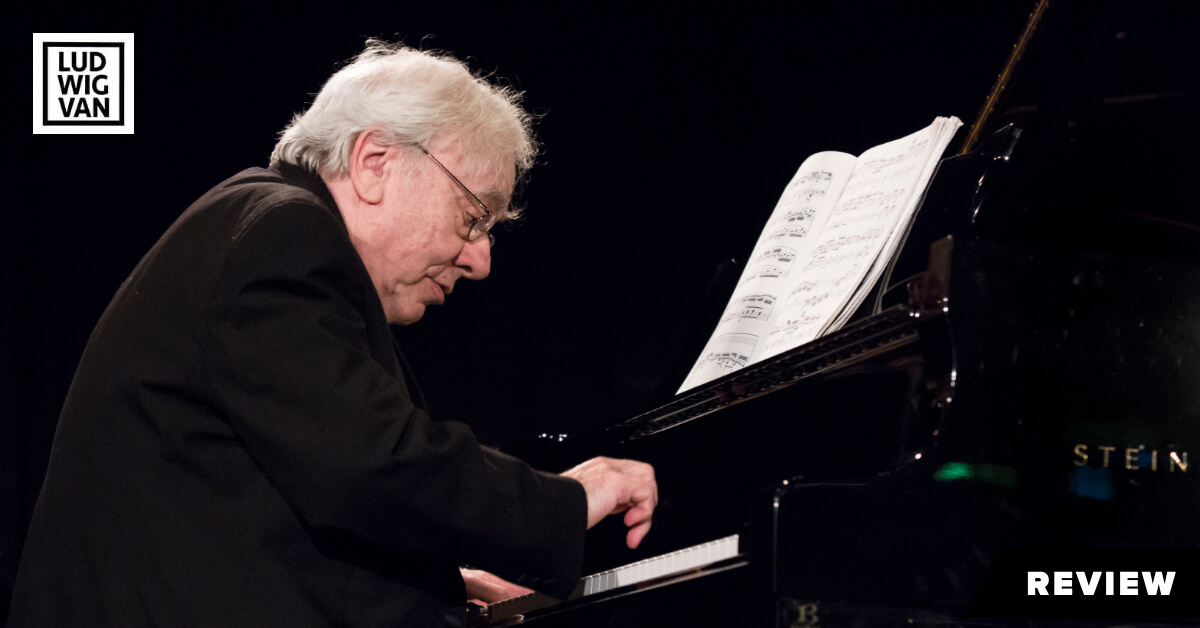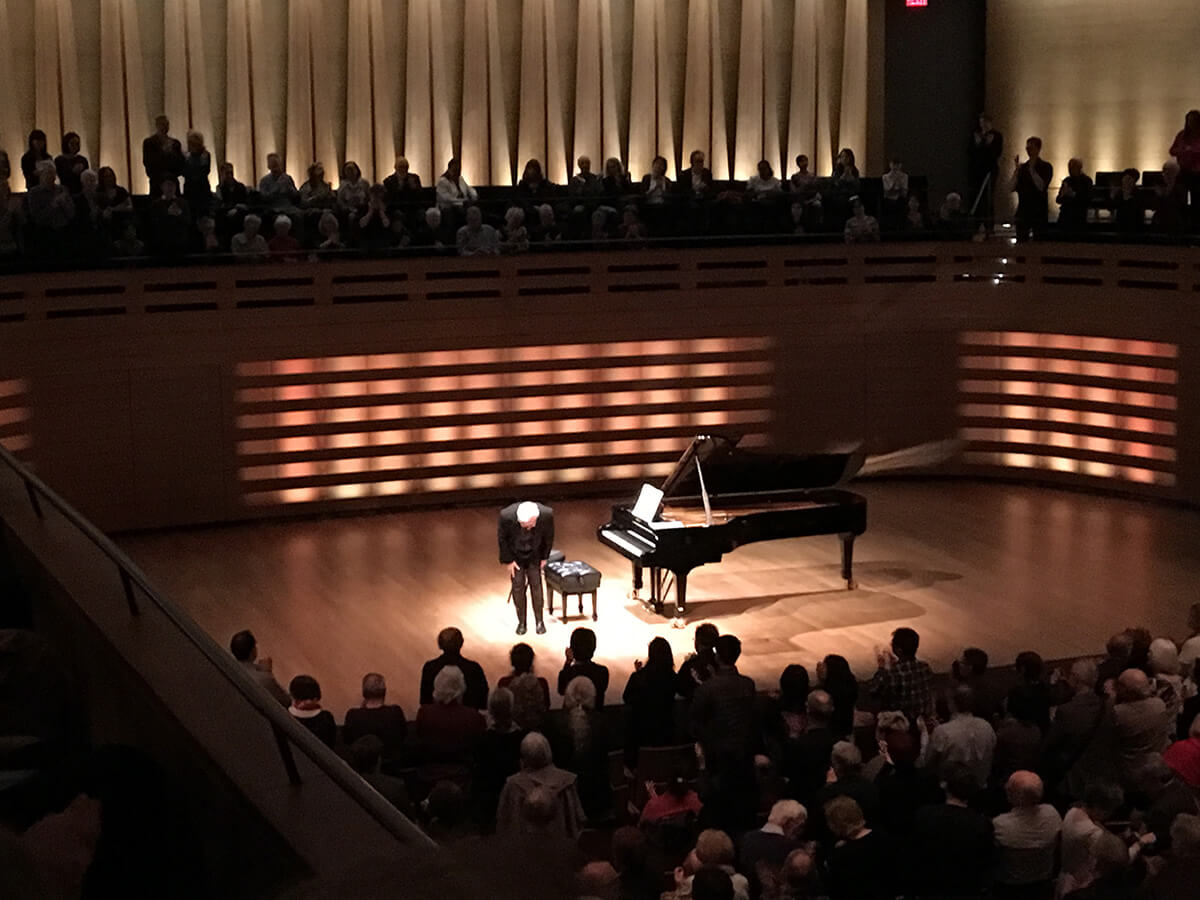
Richard Goode at Koerner Hall. Saturday, April 7.
The ingredients, Sunday afternoon, were there: Koerner Hall, a big crowd, a program of late Beethoven and an American pianist of high repute, Richard Goode, who had the wherewithal to realize the glories of this special repertory. Most of the time.
Most of the “most” was in the second half, which ended with the valedictory Sonata Op. 111. The opening movement expressed a fine frenzy. Semiquavers, rippling rather than thundering, were admirably distinct, a couple of slight smudges notwithstanding. Beethoven channels his abundant energy into quirky counterpoint in the development. Always in control of multiple strands, Goode made the inspirations seem integral.
Then came the celebrated Arietta at a quick tempo that emphasized the three beats behind the 9/16 time signature. Surprising at first, Goode’s clear-headed approach had its advantages. If we got less celestial navigation than usual, we heard a masterful set of variations played with balance, probity and a fine ear for the trills, tremolos and other devices by which Beethoven evokes strange beauties at the top and bottom of the keyboard.
Before this Goode played the mercurial final six of the 11 Bagatelles Op. 119, smartly characterizing each, including the 10th, a syncopated accompaniment in search of a melody that is over in a matter of seconds. Goode added a faint vocalise to the lyrical 11th Bagatelle, though nothing to compare with the obbligatos of Glenn Gould.

Pleasure was less consistent in three sonatas heard before intermission. The call-and-response opening of Op. 90 was nicely judged, both with dynamic nuance and rubato. The second of two movements raced by quickly despite Beethoven’s “nicht zu geschwind” command.
Op. 81a (“Les Adieux”) seemed prosaic throughout. There was more to admire in Op. 101, particularly the martial second movement, crisply articulated and supported by bell-like sonorities in the left hand. Goode’s aptitude for counterpoint was especially apparent in the finale. About the first and third movements, there was little to say.
In sum, this Royal Conservatory presentation was satisfactory but not quite satisfying. These sonatas are among the greatest ever written. Some in the crowd (attentive if including a few coughers) might have been surprised by Goode’s use of the score and a page-turner, who was required to do some quick flipping when an exposition repeat complicated her assignment. Judging by YouTube clips, the pianist uses sheet music consistently. Not just for Beethoven!
LUDWIG VAN TORONTO
Want more updates on classical music and opera news and reviews? Follow us on Facebook, Instagram or Twitter for all the latest.
- SCRUTINY | Moussa Concerto Sounds Strong In Toronto Symphony Orchestra Premiere, Paired With Playful Don Quixote - April 4, 2024
- SCRUTINY | Esprit Orchestra At Koerner Hall: Ligeti 2, Richter No Score - April 1, 2024
- SCRUTINY | Sibelius & New Cello Concerto By Detlev Glanert Offers A Mixed Bag From The TSO - March 28, 2024



